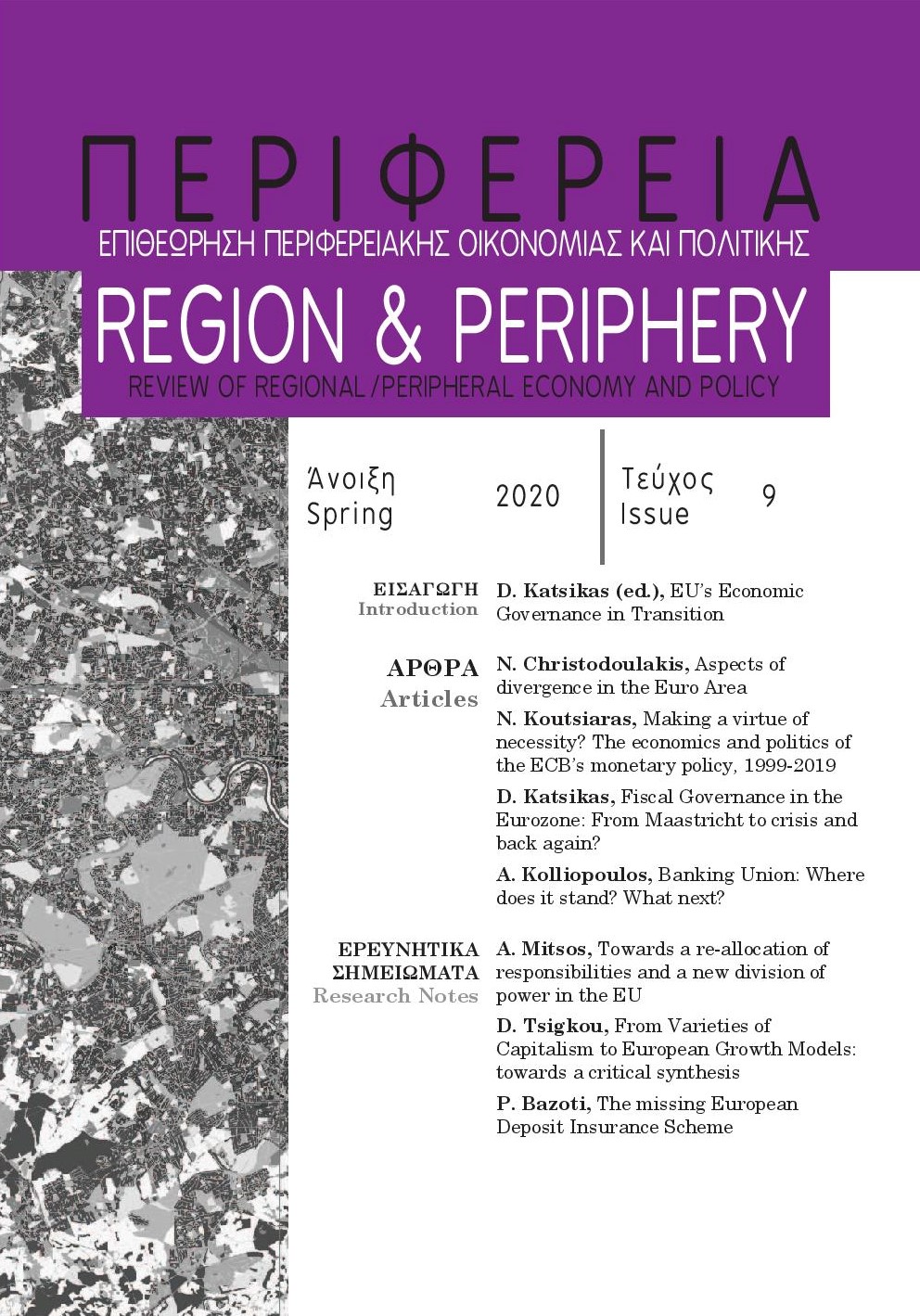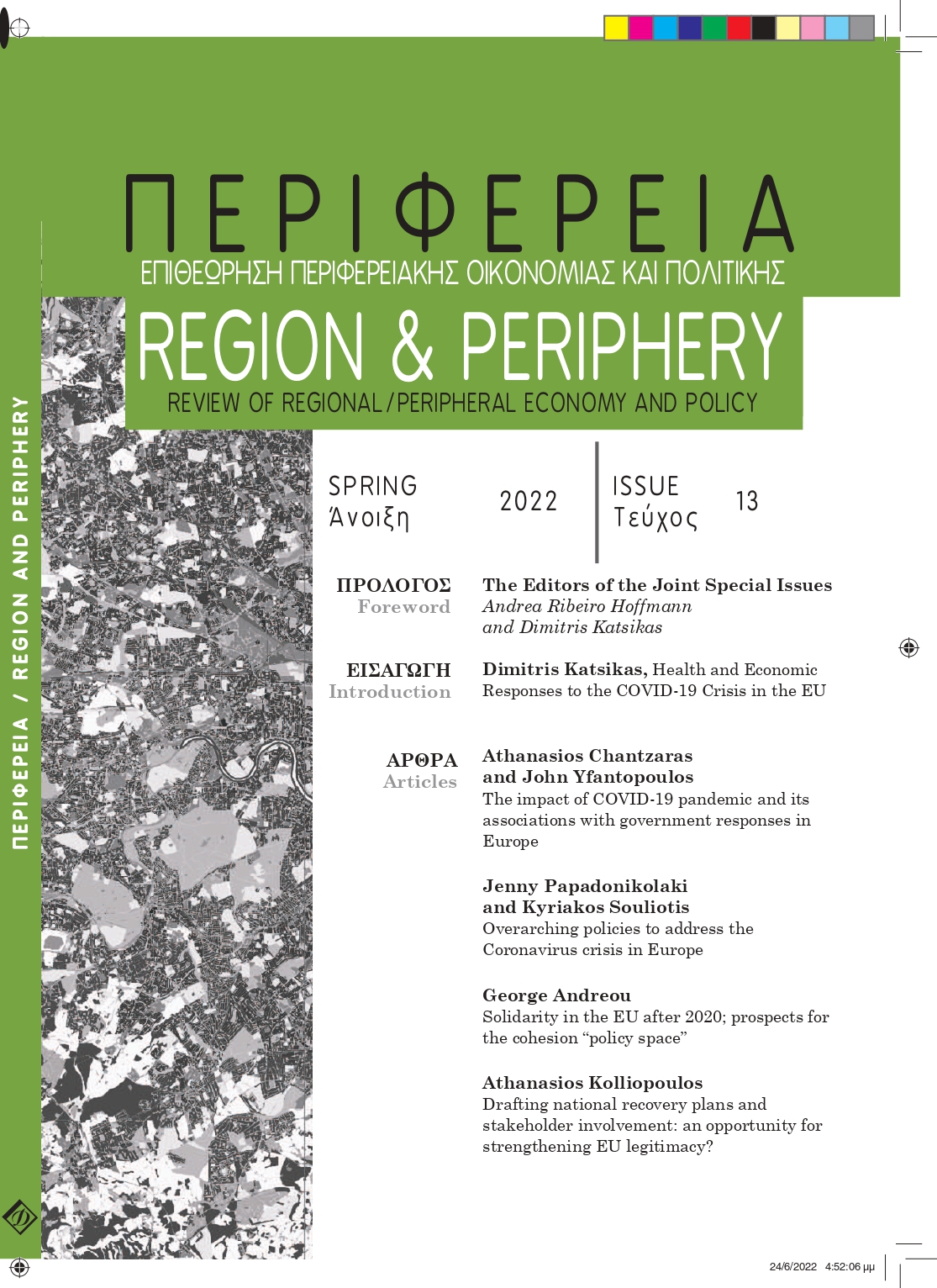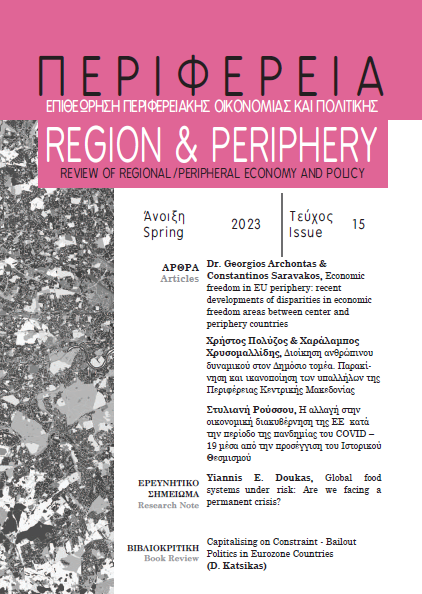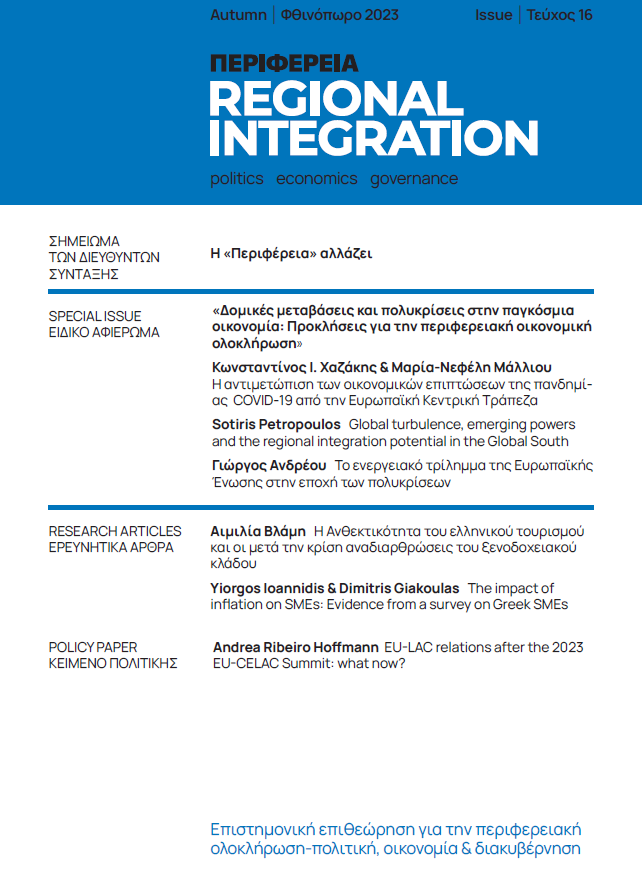Alcidi C. and D. Gros (2014), “Implications of EU Governance Reforms: Rationale and Practical Application”, ETLA Report No 25, The Research Institute for the Finnish Economy, 6 May, Helsinki.Balassa B. (1978), “The New Protectionism and the International Economy”, Journal of World Trade Law, 12 (5): 409-436.Badinger H. and W. Reuter (2017), “The case for fi scal rules”, Economic Modelling 60, pp.334-343.Beetsma R., X. Debrun, X. Fang, Y. Kim and V. Lledó (2018), “Independent Fiscal Councils: Recent Trends and Performance”, IMF Working Paper18/68, International Monetary Fund, Washigton D.C.Beetsma R. and M. Giuliodori (2010), “The Macroeconomic Costs and Benefi ts of the EMU and Other Monetary Unions: An Overview of RecentResearch”, Journal of Economic Literature 48 (3): 603-41.Beetsma R. and M. Larch (2019), “EU Fiscal Rules: Further Reform or Better Implementation?”, ifo DICE Report, 17 (2), 7-11.Begg I. (2011), “Prevent or Cure? Dilemmas Facing Economic Governance”, In Begg I., A. Belke, S. Dullien, D. Schwarzer and R. Vilpišauskas, European Economic Governance: Impulses for Crisis Prevention and New Institutions. Bertelsmann Stiftung.Begg I. (2017), “Fiscal and other rules in EU economic governance: helpful, largely irrelevant or unenforceable?”, National Institute Economic Review.Benassy-Quere A., K.M. Brunnermeier, H. Enderlein, E. Farhi, M. Fratzscher, C. Fuest, P.O. Gourinchas, P. Martin, J. Pisani-Ferry, R. Rey, Schnabel I., N. Veron, B. Weder di Mauro and J. Zettelmeyer (2018), “Reconciling Risk Sharing with Market Discipline, A Constructive Approach to Euro Area Reform”, CEPR Policy Insight 91, London.Bordo M.D., A. Markiewicz and L. Jonung (2011), “A Fiscal Union for the Euro: Some Lessons from History.” NBER Working Paper 17380, National Bureau of Economic Research, Cambridge, MA.perifereia t.9o.indd 10515/6/2020 1:18:03 μμ
ΠΕΡΙΦΕΡΕΙΑBrunnermeier M.K., S. Langfi eld, M. Pagano, R. Reis, S.V. Nieuwerburgh and D. Vayanos (2016), ‘‘ESBies: Safety in the tranches’’, ESRB Working Paper Series, No 21.Buiter W.H. (2006), “The ‘Sense and Nonsense of Maastricht’ Revisited: What Have we Learned about Stabilization in EMU?”. Journal of Common Market Studies. 44 (4): 786-710.Buti M. (2020), “Economic policy in the rough: A European journey”, Policy Insight No 98, January, Centre for Economic Policy Research.Calmfors L. (2015), “The Roles of Fiscal Rules, Fiscal Councils and Fiscal Union in EU Integration”, IFN Working Paper No. 1076, Research Institute of Industrial Economics, Stockholm.Calmfors L. and S. Wren-Lewis (2011), “What Should Fiscal Councils Do?”, CESifo Working Paper Series No. 3382. Calmfors L. and J. Driffi ll (1988), “Bargaining Structure, Corporatism and Macroeconomic Performance”. Economic Policy. 6:13-61.Caselli F. and J. Reynaud (2019), “Do fi scal rules cause better fi scal balances? A new instrumental variable strategy’’, IMF Working Paper, 19/9.Claeys G., Z. Darvas and Lenadro Alvaro (2016), “A Proposal to Revive the European Fiscal Framework”, Bruegel Policy Contribution, Issue 7, March.Corsetti G., L. Dedola, M. Jarociński, B. Maćkowiak and S. Schmidt (2016), “Macroeconomic Stabilization, Monetary-Fiscal Interactions, and Europe’s Monetary Union”, ECB Working Paper 1988.Council – Commission of the European Communities (1970), Report to the Council and the Commission on the realisation by stages of Economic and Monetary Union in the Community, “Werner Report”, Supplement to Bulletin II – 1970 of the European Communities, 8 October.Debrun X. and T. Kinda (2017), “Strengthening Post-Crisis Fiscal Credibility: Fiscal Councils on the Rise – A New Dataset”, Fiscal Studies, Institute for Fiscal Studies, Vol. 38: 667-700.Debrun X., T. Kinda, T. Curristine, L. Eyraud, J. Harris and J. Seiwald (2013), “The functions and impact of fi scal councils”, IMF Policy Paper, July, International Monetary Fund, Washington D.C.Debrun X. and M.S. Kumar (2007), “Fiscal Rules, Fiscal Councils and All That: Commitment Devices, Signaling Tools or Smokescreens?” in: Banca d’Italia (eds) Fiscal Policy: Current Issues and Challenges, 479-512.perifereia t.9o.indd 10615/6/2020 1:18:03 μμ
REGION & PERIPHERY[107]Debrun X., L. Moulin, A. Turrini, J. Ayuso-i-Cassals and M. Kumar (2008), “Tied to the mast? National fi scal rules in the European Union”, Economic Policy 23(4), pp.297-2362.De Grauwe P. (2009), The Economics of Monetary Union, Oxford, Oxford University Press.De Grauwe P. (2011), “The Governance of a Fragile Eurozone”, CEPS Working Paper, Νο. 346.De Grauwe P and H. Heens (1993), “Real Exchange Rate Variability in Monetary Unions”, Recherches Économiques de Louvain, 5/ 1-2.Draghi M. (2018), “Risk-reducing and risk-sharing in our Monetary Union”, Speech at the European University Institute, Florence, 11 May.Eichengreen B. (1990), “Is Europe an Optimum Currency Area?”, CEPR Discussion Paper, Νο 478.Enderlein H., L. Guttenberg and J. Spiess (2013), “Blueprint for a cyclical shock insurance in the euro area”, Studies & Reports No. 100, Jacques Delors Institute, Paris.European Commission (1998), “Commission’s Recommendation Concerning the Third Stage of Economic and Monetary Union: Convergence Report 1998”, European Economy No 65, Brussels.European Commission (2017), Further Steps towards Completing Europe’s Economic and Monetary Union: A Roadmap, Communication COM(2017)821, 6.12.Financial Crisis Inquiry Commission (2011), The Financial Crisis Inquiry Report, Washington DC.Frankel J. (2014), “International Coordination”, in Policy Challenges in a Diverging Global Economy, Asia Economic Policy Conference, organized by Reuven Glick and Mark Spiegel (Federal Reserve Bank of San Francisco), Nov. 19-20.Frankel J. and A. Rose (1998), “The endogeneity of the optimum currency area criteria”, Economic Journal, 108: 1009-1025.Gilbert N., J. Hessel and S. Verkaart (2013), “Towards a Stable Monetary Union: What Role for Eurobonds?”, DNB Working Paper No. 379, May, De Nederlandsche Bank NV, Amsterdam.Heinemann F., M.D. Moessingerb and M. Yeterb (2018), “Do fi scal rules con-strain fi scal policy? A meta-regression-analysis”, European Journal of Political Economy, 51, pp.69-92.perifereia t.9o.indd 10715/6/2020 1:18:04 μμ
ΠΕΡΙΦΕΡΕΙΑHolm-Hadulla F., S. Hauptmeier and P. Rother (2012), “The impact of expen-diture rules on budgetary discipline over the cycle”, Applied Economics,44(25), pp. 3287-3296.Ioannou D. and L. Stracca (2011), ‘‘Have Euro Area and EU Economic Governance Worked? Just the Facts”, Working Paper Series 1344, European Central Bank.Kamps C., J. Cimadomo, S. Hauptmeier and N. Leiner-Killinger (2017), “Refl ections on the Euro Area Fiscal Stance”, Intereconomics, Vol. 52, No 3, pp. 125-131.Kenen P.B. (1969), “The Theory of Optimum Currency Areas: An Eclectic View”, in R. Mundell and A. Swoboda (eds) Monetary Problems of the International Economy, University of Chicago Press, Chicago.Kennedy S. and J. Robbins (2001), The Role of Fiscal Rules in Determining Fiscal Performance”, Department of Finance Working Paper 2001-16, Ministry of Finance, Canada.Koen V. and P. van den Noord (2005), “Fiscal Gimmickry in Europe: One-Off Measures and Creative Accounting”, OECD Economics Department Working Papers, No. 417, OECD Publishing.MacDougall D. (1977), Report of the Study Group on the Role of Public Finance in European Integration, Commission of the European Communities, Economic and Financial Series, Vol. A13.Maclennan D., J. Muellbauer and M. Stephens (1999), “Asymmetries in Housing and Financial Market Institutions and EMU”, CEPR Discussion Paper No 2062, January.Manasse P. and D. Katsikas (eds), Economic Crisis and Structural Reforms in Southern Europe: Policy Lessons. Routledge.Marzinotto B., A. Sapir and G.B. Wolff (2011), “What Kind of Fiscal Union?”, Bruegel Policy Briefs, Issue 2011/06, November 2011.Marjolin R. (1975), Report of the Study Group ‘Economic and Monetary Union, 1980’.McKinnon R.I. (1963), “Optimum currency areas”, American Economic Review, 53, 717-725.Merler S. (2018), “The debate on euro-area reform”,Bruegel Blog Post, April 16.Messori M. and S. Micossi (2018), “Counterproductive Proposals on Euro Area Reform by French and German Economists”, CEPS Policy Insight No. 2018/04, CEPS, Brussels.perifereia t.9o.indd 10815/6/2020 1:18:04 μμ








